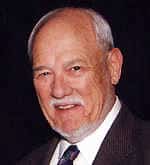 By ANDY ANDREWS
By ANDY ANDREWS
Los Alamos World Futures Institute
In the fall of 1989, the Cognitive Systems Engineering Group in the Los Alamos Nation Laboratory held a distance learning conference at the Inn of the Mountain Gods in Mescalero, N.M.
At the time, the two dominant terms were distance education and distance training. Distance education was the dominant terminology used by the formal education system, led by the University of Wisconsin.
In contrast, distance training seemed primarily the purview of government instructional bodies, particularly the military, plus motivated private companies.
The term “distance learning” was used because a major aspect of the conference was to build unity of effort in the future growth and evolution of the learning systems. In 1989, desktop computers were slow, tablets did not really exist, cell phones were almost fiction except for Captain Kirk in Star Trek, CD-ROMs were available but limited, and digital video devices had yet to be invented.
Plus the speed of digital communication was measures in bits per second, not the million times greater megabits per second. The Distance Learning Conference Proceeding, LA-11883-C, was published in June 1990. Ironically, if you read the proceedings today, you might believe the publication was very recent except for references to older technology.
To really explore the subject, it is best to begin with some terms: education, training, learning, teaching and distance. We will begin with “learning” since we are engaged in “life-long learning,” whether we want to be or not. Learning can be visual, aural, verbal, physical, logical or social. It is the acquisition of knowledge and skills through study, being taught, or just being alive. The process has a hierarchical structure, sometimes rapid and sometime slow. It can be physical, mental or both. We can learn that a candy bar tastes good with one bite, or not, but it may take a long time to discover that too many candy bars (calories) and cause weight gain.
If we engage in lifelong learning, one could argue that education is not needed because you can get your needed knowledge and skills yourself. But education also includes inculcating the values and beliefs of society as well as the necessary habits to be part of it. Or is that training? Society creates an educational system so that children can mentally change into adults as their bodies exhibit growth. But are all societies alike, having identical values and beliefs? To quote Google, education is the process facilitating learning or the acquisition of knowledge, skills, values, beliefs and fact.
The individual progresses through growth and receives education until he or she reaches 18. At least this is the arbitrary age designation, testing not required. Then the individual continues education, undergoes training for a specific job or profession, or receives on-the-job training. While we can argue that training begins before education, especially in the management of biological functions, training as used here refers to doing a job or acquiring a needed skill.
Upon becoming an adult, the person needs some training to earn a wage, but the definition becomes confusing. During “education” young people receive some training such as keyboarding, a skill needed for education today. One possible definition is that training is centered on activities needed by members of the organization, including knowledge, skills, abilities, and attitudes. Note the absence of values, beliefs and habits.
In education, we want to instill in people a bunch of facts, beliefs and perceptions with the skills to apply them properly on both a personal and societal level. This is similar to training except that training is more focused. Nevertheless, learning is about the acquisition of skills and knowledge by the individual. It must be accomplished by the individual. It includes visual, aural, verbal, physical, logical, social and solitary learning all of which can be accomplished or obtained through experience, study or by being taught. It is controlled by the individual and when we send children to school to become prepared for adulthood, we have no control over what they learn, only what is presented. This is teaching.
Usually we use teaching as a word to describe what teachers do and part of a professional teacher’s education and qualification includes learning how to impart knowledge and skills to the individual. Clearly the teacher must know and understand the material being taught and a teacher is not always a professional. A parent “teaches” a child how to use a potty, but can he or she effectively teach someone that a participle is an adjective and a gerund is a noun? Hence, humanity created schools with faculties of “teachers” qualified in the skills of imparting knowledge to certain levels in various disciplines. And this happens with as little distancing, social or otherwise, between the teacher and the student as possible and reasonable.
The student learns from a source a distance away. The teacher is a distance from the student and must convey knowledge and receive feedback over a distance. If the student and the teacher cannot be in the same space allowing contact and feedback, they are not physically present in the same space. They are at a “distance” from one another. The student is engaged in distance learning while the teacher is practicing distance teaching. But is the teacher a human or a machine?
Til next time….
Visit the Los Alamos World Futures Institute at LAWorldFutures.org. Feedback, volunteers and donations (501.c.3) are welcome. Email andy.andrews@laworldfutres.org or bob.nolen@laworldfutures.org. Previously published columns can be found at https://ladailypost.com or http://www.laworldfutures.org.

